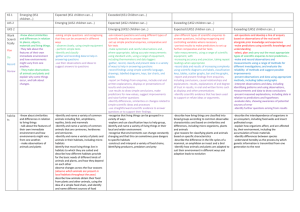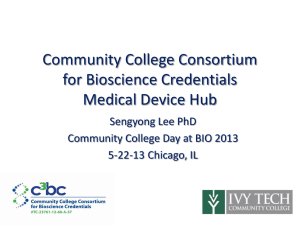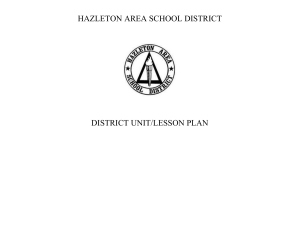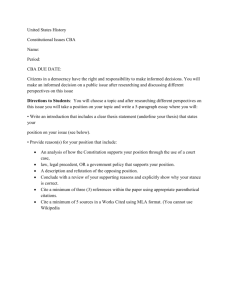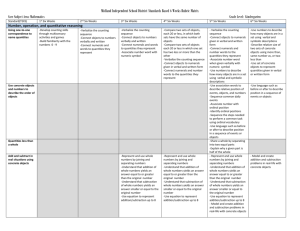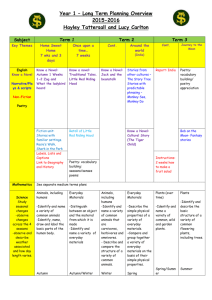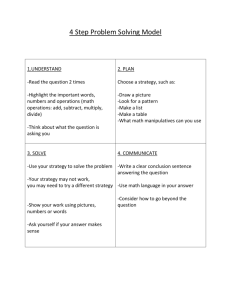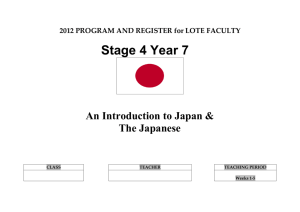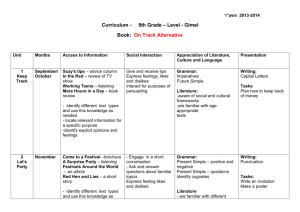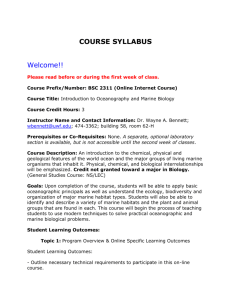Social Studies Rubric - English - Midland Independent School District
advertisement
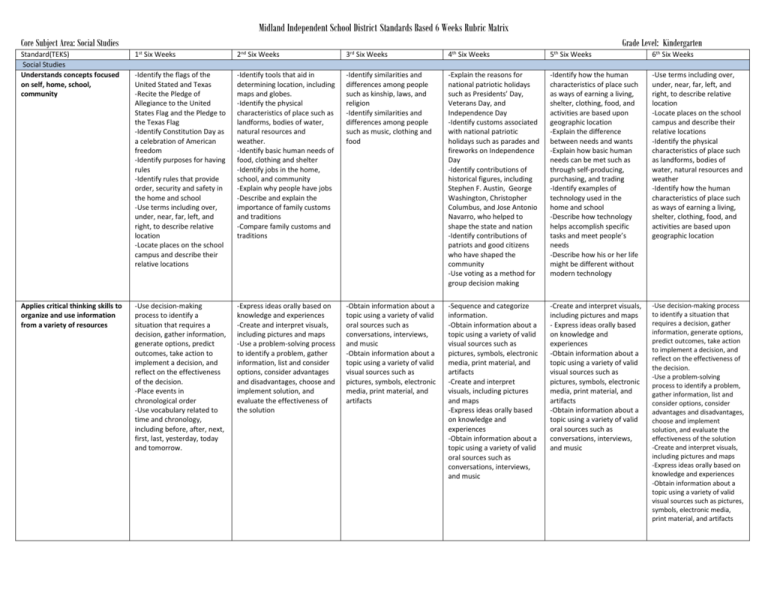
Midland Independent School District Standards Based 6 Weeks Rubric Matrix Core Subject Area: Social Studies Grade Level: Kindergarten Standard(TEKS) Social Studies Understands concepts focused on self, home, school, community 1st Six Weeks 2nd Six Weeks 3rd Six Weeks 4th Six Weeks 5th Six Weeks 6th Six Weeks -Identify the flags of the United Stated and Texas -Recite the Pledge of Allegiance to the United States Flag and the Pledge to the Texas Flag -Identify Constitution Day as a celebration of American freedom -Identify purposes for having rules -Identify rules that provide order, security and safety in the home and school -Use terms including over, under, near, far, left, and right, to describe relative location -Locate places on the school campus and describe their relative locations -Identify tools that aid in determining location, including maps and globes. -Identify the physical characteristics of place such as landforms, bodies of water, natural resources and weather. -Identify basic human needs of food, clothing and shelter -Identify jobs in the home, school, and community -Explain why people have jobs -Describe and explain the importance of family customs and traditions -Compare family customs and traditions -Identify similarities and differences among people such as kinship, laws, and religion -Identify similarities and differences among people such as music, clothing and food -Explain the reasons for national patriotic holidays such as Presidents’ Day, Veterans Day, and Independence Day -Identify customs associated with national patriotic holidays such as parades and fireworks on Independence Day -Identify contributions of historical figures, including Stephen F. Austin, George Washington, Christopher Columbus, and Jose Antonio Navarro, who helped to shape the state and nation -Identify contributions of patriots and good citizens who have shaped the community -Use voting as a method for group decision making -Identify how the human characteristics of place such as ways of earning a living, shelter, clothing, food, and activities are based upon geographic location -Explain the difference between needs and wants -Explain how basic human needs can be met such as through self-producing, purchasing, and trading -Identify examples of technology used in the home and school -Describe how technology helps accomplish specific tasks and meet people’s needs -Describe how his or her life might be different without modern technology -Use terms including over, under, near, far, left, and right, to describe relative location -Locate places on the school campus and describe their relative locations -Identify the physical characteristics of place such as landforms, bodies of water, natural resources and weather -Identify how the human characteristics of place such as ways of earning a living, shelter, clothing, food, and activities are based upon geographic location Applies critical thinking skills to organize and use information from a variety of resources -Use decision-making process to identify a situation that requires a decision, gather information, generate options, predict outcomes, take action to implement a decision, and reflect on the effectiveness of the decision. -Place events in chronological order -Use vocabulary related to time and chronology, including before, after, next, first, last, yesterday, today and tomorrow. -Express ideas orally based on knowledge and experiences -Create and interpret visuals, including pictures and maps -Use a problem-solving process to identify a problem, gather information, list and consider options, consider advantages and disadvantages, choose and implement solution, and evaluate the effectiveness of the solution -Obtain information about a topic using a variety of valid oral sources such as conversations, interviews, and music -Obtain information about a topic using a variety of valid visual sources such as pictures, symbols, electronic media, print material, and artifacts -Sequence and categorize information. -Obtain information about a topic using a variety of valid visual sources such as pictures, symbols, electronic media, print material, and artifacts -Create and interpret visuals, including pictures and maps -Express ideas orally based on knowledge and experiences -Obtain information about a topic using a variety of valid oral sources such as conversations, interviews, and music -Create and interpret visuals, including pictures and maps - Express ideas orally based on knowledge and experiences -Obtain information about a topic using a variety of valid visual sources such as pictures, symbols, electronic media, print material, and artifacts -Obtain information about a topic using a variety of valid oral sources such as conversations, interviews, and music -Use decision-making process to identify a situation that requires a decision, gather information, generate options, predict outcomes, take action to implement a decision, and reflect on the effectiveness of the decision. -Use a problem-solving process to identify a problem, gather information, list and consider options, consider advantages and disadvantages, choose and implement solution, and evaluate the effectiveness of the solution -Create and interpret visuals, including pictures and maps -Express ideas orally based on knowledge and experiences -Obtain information about a topic using a variety of valid visual sources such as pictures, symbols, electronic media, print material, and artifacts
